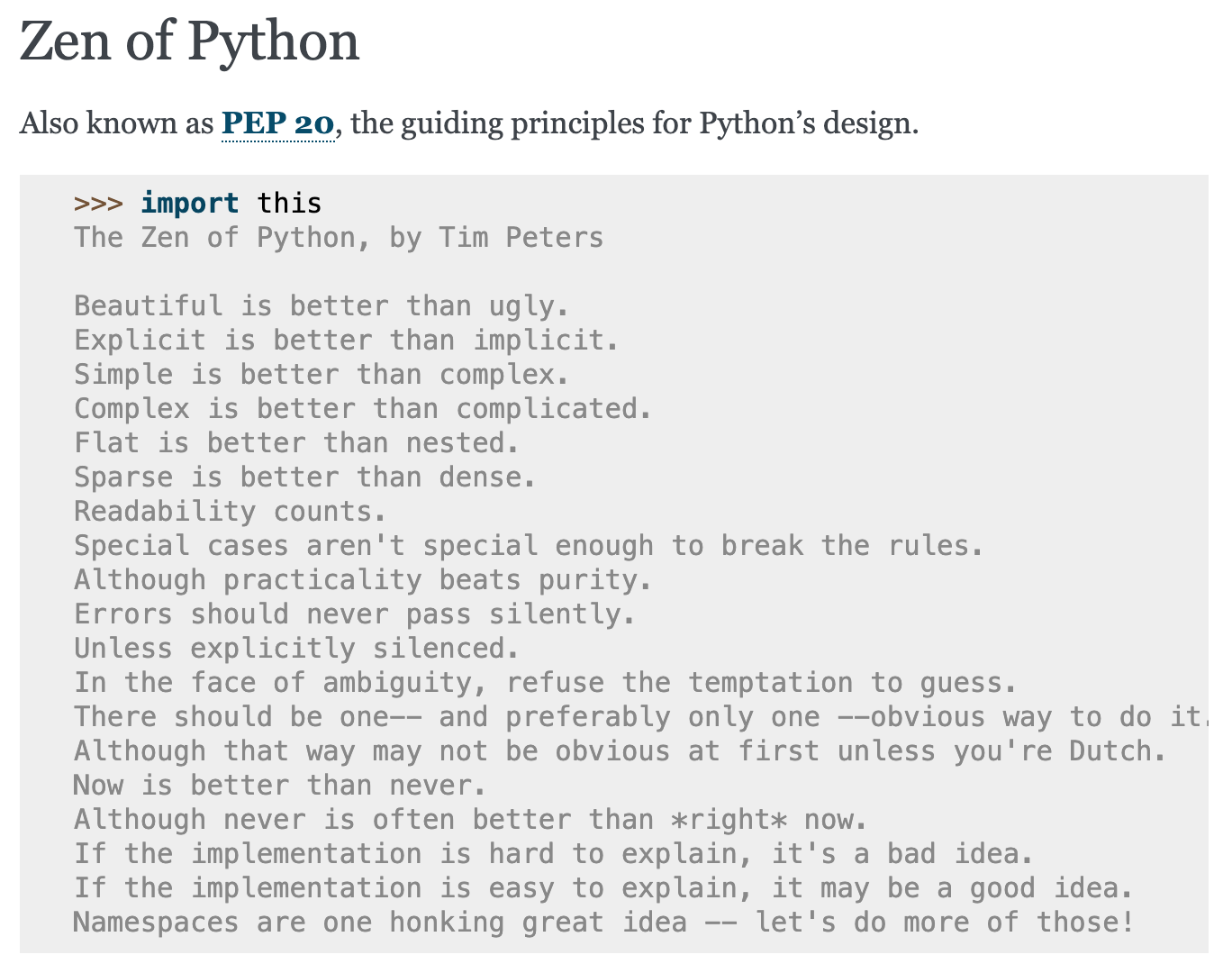I decided to make some Python notes. Since there is a ton of information about Python, these notes will be mostly for my reference but if they help anyone - it will be great. The best way to understand it - try it and make a note:) starting with the basic script structure:

starting with the basic script structure:
#!/usr/bin/env python
# """Module docstring."""
# Imports
import time
import sys
# Module Constants
CONSTANT_VARIABLE = "Variables that Probably shouldn't be changed"
# Module "Global" Variables
global_variable_file = "file.txt"
# Module Functions and Classes
def main(*args, **kwarg):
"""Main script function.
# Check to see if this file is the "__main__" script being executed
if __name__ == '__main__':
_, *script_args = sys.argv
main(*script_args)
- #!/usr/bin/env python: Tells the shell the interpreter to “execute” the script.
- #"““Module docstring.””": docstrings. All modules, functions, and classes should normally have docstrings.
- #Imports: Import other code into the script
- #Module Constants: all-CAPS variable names that probably shouldn’t be changed
- #Module “Global” Variables: Every function and class will have to these variables
- #Module Functions and Classes: Creates and stores new functions or class definitions available to run in the code
- #name = main: When script is executed, it is given the internal name = main, when module is imported, name = __ {func name}__
Best way to import modules:
import mod
[...]
# and call the function in {module}.{func} format
x = mod.func(4) # func is a part of mod's namespace
Python Naming (per PEP 8):
• Functions, variables, and attributes: lowercase_underscore
• Protected instance attributes: _leading_underscore
• Private instance attributes: __double_leading_underscore
• Classes and exceptions: CapitalizedWord
• Module-level constants: ALL_CAPS
• Instance methods in classes should use self as the name of the first parameter (which refers to the object).
• Class methods should use cls as the name of the first parameter (which refers to the class).
PEP8
PEP 8 – Style Guide for Python Code. There are several tools that help to check the code for conformance:
ciscos:dgolovach$ pycodestyle parse-ise.py
parse-ise.py:13:1: E303 too many blank lines (6)
parse-ise.py:37:80: E501 line too long (107 > 79 characters)
parse-ise.py:38:80: E501 line too long (103 > 79 characters)
parse-ise.py:43:80: E501 line too long (89 > 79 characters)
parse-ise.py:86:1: E303 too many blank lines (4)
parse-ise.py:102:5: E722 do not use bare 'except'
autopep8 can automatically reformat code in the PEP 8 style. It fixes most of the formatting issues that are reported by pycodestyle.
here –in-place is to make changes to files in place.
ciscos:dgolovach$ autopep8 --in-place parse-ise.py
ciscos:dgolovach$ pycodestyle parse-ise.py
parse-ise.py:33:80: E501 line too long (107 > 79 characters)
parse-ise.py:34:80: E501 line too long (103 > 79 characters)
parse-ise.py:39:80: E501 line too long (89 > 79 characters)
parse-ise.py:40:80: E501 line too long (81 > 79 characters)
parse-ise.py:96:5: E722 do not use bare 'except'
Pylint is a python linter that checks the source code, acts as a bug and quality checker and has more verification checks and options than just PEP8(Python style guide). Even gets you a score:)

To customize pylint we can configure it at the project-level, user-level or global-level .
- create a /etc/pylintrc for default global configuration
- create a ~/pylintrc for default user configuration
- create a pylintrc file
To create a pylintrc file pylint –generate-rcfile > pylintrc , which creates a template pylintrc(with comments) which can be customized as required.
For example - to set the _max-line-length _to 88 (by default - 100)


Docstrings
Depending on the complexity:
def add(a, b):
"""Add two numbers and return the result."""
return a + b
def random_number_generator(arg1, arg2):
"""
Summary line.
Extended description of function.
Parameters
----------
arg1 : int
Description of arg1
arg2 : str
Description of arg2
Returns
-------
int
Description of return value
"""
return 42
Docstrings are not ignored by the interpretator, and could be called to check doc for function: print.doc
print.doc
“print(value, …, sep=’ ‘, end=‘n’, file=sys.stdout, flush=False)nnPrints the values to a stream, or to sys.stdout by default.nOptional keyword arguments:nfile: a file-like object (stream); defaults to the current sys.stdout.nsep: string inserted between values, default a space.nend: string appended after the last value, default a newline.nflush: whether to forcibly flush the stream.”
A quick tip: We can use “_” to make the number more readable (Python 3.6) + swap values - easy:
